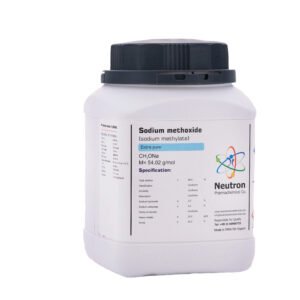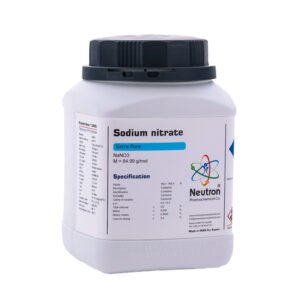Nitric Acid 65%
| Density: | ~ 1.37 g/m3 (20 °C) |
| HS code: | 28080000 |
| Storage (temperature): | store at +2°C to +25°C |
| SDS: | available |
| R phrase: | R35 |
| S phrase: | S 23.2-26-36/37/39-45 |
| Odour: | pungent |
| Form: | liquid |
| Color: | colourless |
| Solubility in water: | (20 °C) soluble |
| Boiling point: | 121 °C |
| Melting point: | ~ -32°C |
| Vapour pressure: | ~ 9.4 hpa(20 °C) |
| Assay | ~ | 65 | % |
| Description | Conforms | ||
| Identification | Conforms | ||
| Chloride | ≤ | 0.0005 | % |
| Sulfate | ≤ | 0.001 | % |
| Heavy metals | ≤ | 0.0002 | % |
| Iron | ≤ | 0.0002 | % |
| Residue on ignition | ≤ | 0.005 | % |
Nitric acid 65% is a clear, highly corrosive mineral acid commonly used in laboratories and industry as an oxidizing agent, acidifying agent, and reagent in chemical synthesis. It contains approximately 65% pure nitric acid (HNO₃) by weight, diluted with water, making it a concentrated but non-fuming grade.
🏭⚗️ Production
Nitric acid 65% is typically produced by the Ostwald process, in which ammonia is oxidized to nitric oxide, further oxidized to nitrogen dioxide, and then absorbed in water to yield nitric acid. The concentration is adjusted to 65% by dilution of more concentrated acid, usually from distillation units.
🔬 Properties
Nitric acid 65% is a colorless to pale yellow liquid with a sharp, acrid odor. Its chemical formula is HNO₃, and in 65% solution form, it has a density of approximately 1.40 g/cm³. It is highly corrosive and reactive, especially with organic compounds and metals. It acts as a strong acid and a powerful oxidizer. The solution is stable under normal conditions but decomposes slowly with exposure to light or heat, producing nitrogen oxides.
🧪 Applications
Nitric acid 65% is widely used in the manufacture of fertilizers, explosives (such as nitroglycerin and TNT), and dyes. In laboratories, it is used for sample digestion, metal analysis, and cleaning of glassware. It is also utilized in the etching and purification of metals and in the semiconductor industry.
⚠️ Safety
Nitric acid 65% is highly corrosive and can cause severe burns upon contact with skin, eyes, or mucous membranes. Its vapors are toxic and irritating to the respiratory system. It reacts violently with organic materials, bases, and reducing agents, posing risks of fire or explosion. Appropriate personal protective equipment, including acid-resistant gloves and eye protection, must be used when handling. It should be stored in tightly closed containers made of compatible materials, away from heat, light, and incompatible substances.






